First 50 Years of Relief Society Reflected in New Book of Original Documents
Contributed By By R. Scott Lloyd, LDS Church News
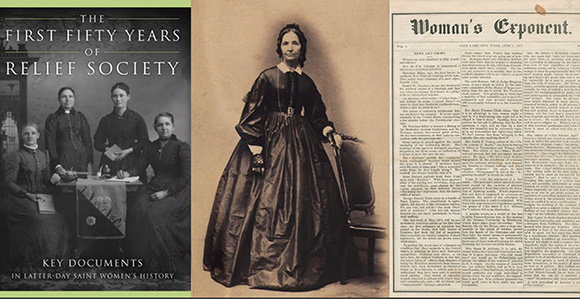
A new book, The First Fifty Years of Relief Society: Key Documents in Latter-day Saint Women’s History, published by the Church Historian’s Press, explores the 19th-century origins of Relief Society.
Article Highlights
- Read much of the book at churchhistorianspress.org.
“One of my favorite parts of the book has just been seeing ordinary women, Church members, called to a specific calling and seeing all of the ways that they sacrifice, pray, and work to do the good of that calling.” —Kate Holbrook, women’s history specialist, Church History Department
Related Links
Emma Liljenquist was a young wife and mother living in Hyrum, Utah, when she was called by her bishop in 1887 to journey to Salt Lake City to study obstetrics and nursing. When she completed her six months of education, she was set apart by two Apostles to be a midwife in her hometown.
“She delivers over a thousand babies and tends to people who are feeling anxious or depressed or sick or have the flu,” said Kate Holbrook, a specialist in women’s history at the Church History Department. “It’s an exhausting work, and she has her own many children to take care of as well, but she is a woman full of love, full of wanting to care for those around her, and willing to sacrifice her time and energy.”
Sister Holbrook is one of four volume editors of a new book, The First Fifty Years of Relief Society: Key Documents in Latter-day Saint Women’s History, published by the Church Historian’s Press, which up to now has been solely engaged in publishing the Joseph Smith Papers project of the Church History Department.
“She says at one point, ‘You may wonder why I did this.’ It was her calling and she wanted to fulfill that calling,” said Carol Cornwall Madsen, one of the other volume editors and a professor emerita of history from Brigham Young University. “It represents so many other women who said, ‘This is my calling, it’s what I’m asked to do, and I’m going to do it.’ We read some minutes from secretaries of Relief Societies who could barely write, but it was their calling, and they spelled the best they could.”
“One of my favorite parts of the book has just been seeing ordinary women, Church members, called to a specific calling and seeing all of the ways that they sacrifice, pray, and work to do the good of that calling,” said Sister Holbrook, who added that Sister Liljenquist exemplifies this.
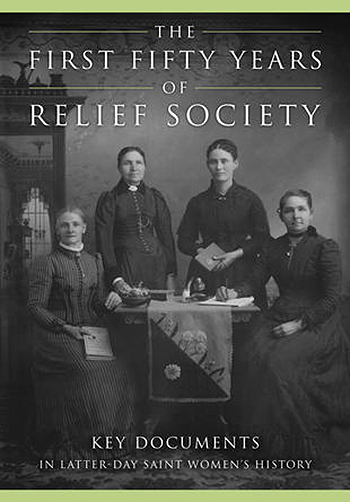
The book cover of The First Fifty Years of Relief Society: Key Documents in Latter-day Saint Women's History.
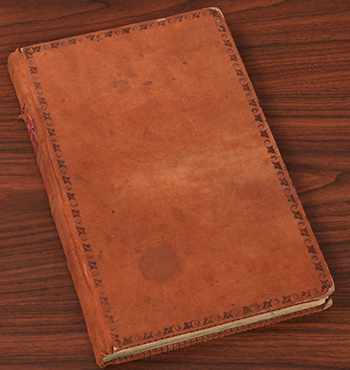
This substantial volume contains the minutes of the Female Relief Society of Nauvoo from its founding on March 17, 1842, through its final meeting on March 16, 1844. Eliza R. Snow, secretary of the Nauvoo society, later carried the book to Utah and used it frequently in instructing local Relief Society leaders and members.
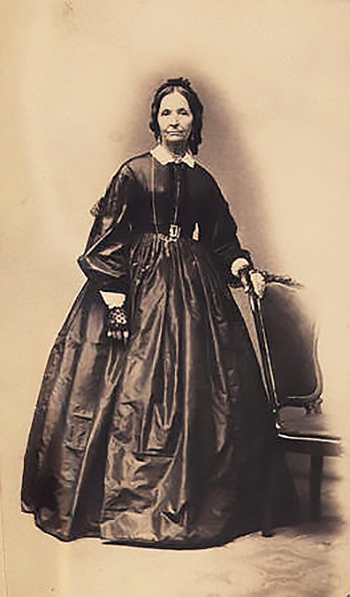
Celebrated poet Eliza R. Snow posed for this photo in 1866, two years before her husband, Brigham Young, commissioned her to assist in organizing local branches of the Relief Society in territorial Utah. She was the first secretary of the Relief Society.
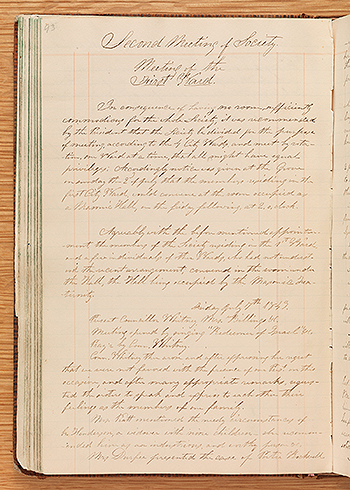
A page of the volume containing the minutes of the Female Relief Society of Nauvoo.
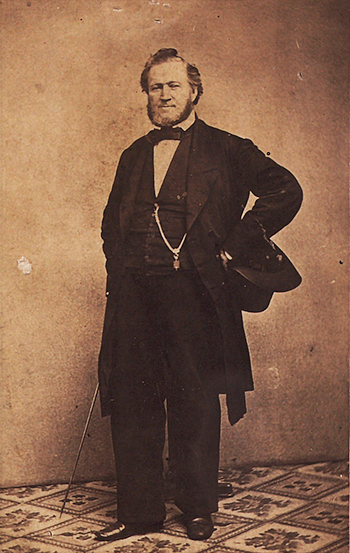
Church President Brigham Young in 1866. In 1867, he called for the reestablishment of the Relief Society in local wards.
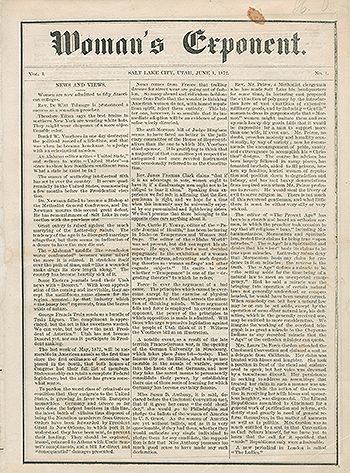
Louisa (Lula) Greene edited this first issue of the Woman’s Exponent (1872–1914), a newspaper produced twice a month by and for Mormon women. The contents included women’s personal essays, short stories, poems, reports on the suffrage movement, articles on home and family life, religious doctrine, and minutes of Latter-day Saint women’s organizations.
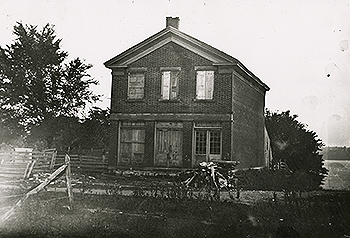
The founding meeting of the Female Relief Society of Nauvoo took place March 17, 1842, on the second floor of this dry goods building known as Joseph Smith's Red Brick Store in Nauvoo.
The new book is a collection of original documents that explores the 19th-century origins of Relief Society, beginning with its founding in 1842 in Nauvoo, Illinois, when it was led by Emma Smith, wife of the Prophet Joseph Smith. It includes the original minute book kept by the women officers in Nauvoo and covers the suspension of the organization in 1845, followed by its resurgence in the Utah Territory beginning in the mid-1850s.
The nearly 800-page book comprises 78 key documents, including meeting minutes, sermons from women and men, newspaper articles and editorials, political speeches, poetry, letters, and journal entries. Six sermons by the Prophet Joseph Smith are part of the content.
Is the volume an outgrowth of the Joseph Smith Papers?
“I would say yes and no,” said Matthew J Grow, one of the volume editors and director of publications for the Church History Department. “The project predates the Joseph Smith Papers in some ways. But certainly, this project used the Joseph Smith Papers as a model and used a lot of the expertise we gained from the Joseph Smith Papers in terms of documentary editing and the transcription work and annotation work; that very much influenced this book.”
Jill Mulvay Derr, one of the volume editors and a retired senior research historian with the Church History Department, said, “The idea of putting the Nauvoo Relief Society Minutes together with other documents up to 1892 goes back to around the year 2000, when Carol and I thought this would be a good way to publish these very precious Nauvoo minutes and get them out to a broader audience than had seen them previously.”
The new volume culminates not only many years of work but also the efforts of many people. “You see that in the acknowledgments of all the people who worked on this,” Sister Holbrook said.
“I think the fact that there are six sermons of Joseph Smith after he had organized the Relief Society, including the organizational meeting, is a kind of connection with the Joseph Smith Papers,” said Sister Madsen. “Where better to publish them than in a book on Relief Society? And then, our purpose was to show the impact of those minutes on subsequent Relief Societies up to 1892. That’s why we took the time to find the documents, and then more were added to give a little heft to the book, but also to round it out, to fill in the gaps.”
The idea of women’s aid societies or benevolent associations affiliated with churches was not new at the time the Relief Society was founded. But Relief Society soon emerged as something quite unlike what was being done at the time.
“There was a discussion in the organizational meeting about what to call it,” said Sister Madsen, who added that Emma Smith didn’t want to call it a benevolent society because she felt that some such societies were corrupt and they weren’t good models.
“And so they decided after some discussion back and forth that it would be the Relief Society, and that’s where the name came from,” Sister Madsen said. “But from then on, I think it was made very clear to the women that this was not in any way just another benevolent society. This was organized by a prophet and was divinely inspired. It followed the pattern of the Church organization. Women had this told to them in many different ways from some of the leaders of the Church in Nauvoo, so they had a sense that this was an exceptional organization.”
Later, in Utah Territory, it would be seen as the “mother organization” of the retrenchment organizations in 1870 that were the forerunners to today’s Young Women organization in the Church, and of the Primary organization that originated in Farmington, Utah, in 1878.
The Relief Societies “were kind of supervising and looking over these organizations,” Sister Derr said.
The book is available at retail outlets for LDS books, but Brother Grow said much of it is online at churchhistorianspress.org. He said all of it will be online within about a year. Online access is free of charge.
Brother Grow recalled the message of President Russell M. Nelson, President of the Quorum of the Twelve Apostles, at the last general conference when he encouraged women in the Church to speak up and speak out for causes of righteousness (see “A Plea to My Sisters”).
“One of the great things about this book is that we see Latter-day Saint women doing that historically,” Brother Grow said. “It’s a great model.”
